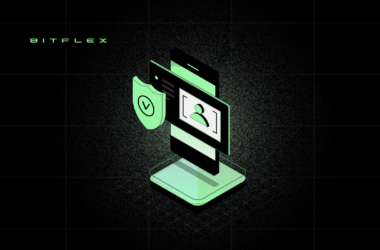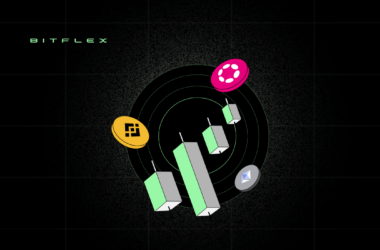Catalogue - Key Takeaways Show

Blockchain technology is garnering significant attention and Ethereum is one of the most prominent platforms. Launched back in 2015, Ethereum has revolutionized the world of decentralization, such as decentralised applications and smart contracts. However, as the blockchain space continues to grow and evolve, Ethereum 2.0 has emerged as a major upgrade promising to address some of the challenges faced by its predecessors. This article will focus on what Ethereum 2.0 is and why it matters.
Understanding Ethereum
Ethereum, often referred to as the “world computer” is a decentralised platform aiming to enable the creation and execution of smart contracts. It operates on blockchain, coupled by distributed ledger, ensuring transparency and immutability. Ethereum’s native cryptocurrency, Ether (ETH) fuels the network and incentivizes participants to perform computational tasks.
Limitations of Ethereum 1.0
Despite its groundbreaking capabilities, Ethereum 1.0 faced several limitations such as scalability, security, and energy efficiency issues. One of the primary concerns in Ethereum 1.0 was scalability bottlenecks, as the current network was processing a limited number of transactions per second (TPS). Additionally, the Proof of Work (PoW) consensus algorithm used by Ethereum 1.0 was energy-intensive and limited the participation of smaller validators.
What is Ethereum 2.0? (A Beacon of Hope)
To overcome the limitations of Ethereum 1.0, Ethereum 2.0, also known as Ethereum Serenity, introduced many innovative features and improvements. The upgrade aimed to transition the platform from a PoW consensus mechanism to a more energy-efficient Proof of Stake (PoS) consensus mechanism. This transition enabled greater network scalability and security while reducing environmental impact.
Beacon Chain
Ethereum 2.0s mainnet launch began with the introduction of the Beacon Chain, that serves as backbone of upgraded network. The Beacon Chain operates as a PoS consensus mechanism, where participants can become validators by locking up their Ether as a collateral. Validators are responsible for proposing and validating blocks, maintaining network consensus, and securing the Ethereum 2.0 network.
Shard Chains
One of the most significant enhancements in Ethereum 2.0 is the implementation of shard chains. Currently, Ethereum operates on a single chain structure but with shard chains, so the network is divided into smaller chains able to process transactions and execute smart contracts in parallel. This scaling solution significantly increases the network’s capacity, also enabling a larger volume of transactions simultaneously.
Cross Links and Merkle Trees
To ensure interoperability between shard chains and Beacon chains, Ethereum 2.0 incorporates crosslinks and a Merkle tree data structure. Crosslinks are references to the latest state of each shard chain, that are periodically added to the Beacon Chain. This mechanism allows for verification and synchronization of data between shards to ensure the overall security and integrity of the network.
Road Ahead
Ethereum 2.0 represents a crucial milestone for the evolution of blockchain technology, addressing the scalability and energy concerns that have limited the Ethereum 1.0. The upgrade will not only enhance the performance and efficiency of the network but also enable the development of more complex decentralised applications with a seamless user experience. Moreover, it will create new opportunities for developers and entrepreneurs to build innovative solutions on a robust and scalable platform.
Conclusion
Ethereum 2.0 is poised to bring transformation to the blockchain landscape offering enhanced scalability, security, and sustainability. With the introduction of Beacon Chains, shard chains and a shift to a PoS consensus mechanism, Ethereum 2.0 opens the door to a more inclusive and efficient ecosystem. As the upgrade continues to unfold the potential for decentralised applications (dApps) and DeFi, other use cases built on Ethereum 2.0 represents a significant step forward to the quest for decentralised future. Its impact will be felt across the various industries in the years to come.
Difference between Ethereum and Ethereum 2.0?
Ethereum, is a decentralized blockchain platform launched in 2015, that enabled the creation and execution of smart contracts as well as decentralized applications (DApps). Ethereum 2.0, or Eth2, is an upgrade aimed at improving scalability and security by transitioning from proof-of-work to proof-of-stake consensus. It introduces, shard chains for parallel processing and aims to make Ethereum more efficient and capable of handling a larger number of transactions.
About Coinflare
Coinflare is a cryptocurrency exchange platform that offers traders a secure, easy-to-use, and convenient way to buy, sell and trade cryptocurrencies. Our platform has been designed with investors of all levels in mind, whether they are just starting out or experienced traders. We offer various features and tools to help users make the best trading decisions possible, including advanced charting and analytics, real-time market data, and various customisable trading interfaces. At Coinflare, we are dedicated to empowering our users and helping them reach their financial goals.
Stay in the loop about our launches, trading pair announcements, contests and more by following us on Discord, Telegram, and Twitter.









